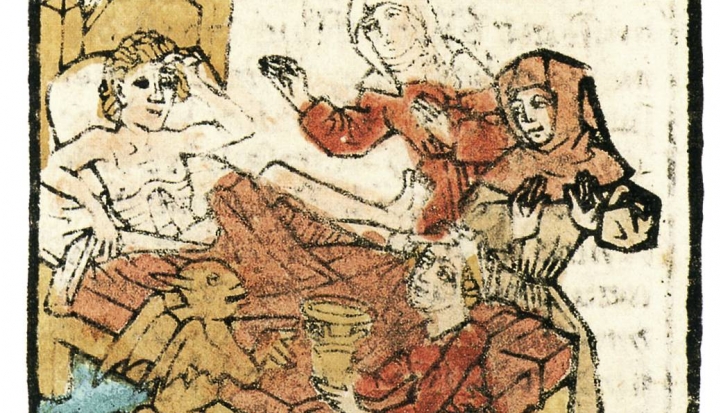I met Marie while I was training to be a chaplain. I was just out of graduate school and I had never really encountered death. I have the great fortune of living in a family in which longevity is the norm. Even now, I have lost only one grandparent: my grandmother, at the age of 93.
Marie was dying. She was 87, and she had cancer that started in her gallbladder but had spread to other organs before she was even diagnosed. When I met her, she was in the hospital for a procedure that would allow her to live a little more comfortably.
In the 15th century, there came into being a set of texts written in Latin, of course, that detailed the good death. Ars moriendi, or The art of dying, spells out the important things to know as a person approaches death. The most important thing – the very first chapter – tells the reader that death is not something to be afraid of, and that dying has a good side.
I read a piece at NPR the other day about palliative care, and it reminded me of these old teachings about the meaning in dying. In the NPR story, a physician (who is called “Dr. Tim”) asks his patient to list the three most important things to her. She responds, “'My girls, playing cards on Wednesdays, and counting money for the church once a month.”
Those three things are the things that the patient’s palliative care team would work to help her continue for the remainder of her life, however long that ended up being.
I think that in our contemporary culture, we are so terrified of death and dying that we fail to take stock of the things that make a good death – or even a good life. When I was working as a chaplain I was a part of a palliative care team. We consulted with patients and with their families about ways that we (the palliative care team) could help to relieve their (the patients’) suffering. Some individuals and many more families were completely resistant to even the words palliative care, because they felt that embracing a quality of life standard was equivalent to giving up.
(Here it should be noted that palliative care and hospice care are not the same thing. Hospice care is specifically for individuals at the end of life. Palliative care refers to care at any stage of an illness that is geared toward treating symptoms and relieving suffering without necessarily being curative.)
Catholic social teaching insists on the inherent dignity of human life from conception through natural death. But so often, in the rush to cure or to hang on, we (as patients, family members, and caregivers) fail to ask “What are the important things? What do we want out of the good life? What are the things that will give me, my loved one, my patient dignity for as long as possible?” Because those questions will inform how we approach the good death.
I was not with Marie when she died, because I worked at the hospital, and she died at home, surrounded by her three daughters, one of whom I saw about a month after Marie died. When I expressed my condolences to her, she thanked me, and then made the remark that “it was a good death.”
That we all might be so blessed.
Image: Anfechtung durch Unduldsamkeit, Ars moriendi, public domain, via Wikimedia.











